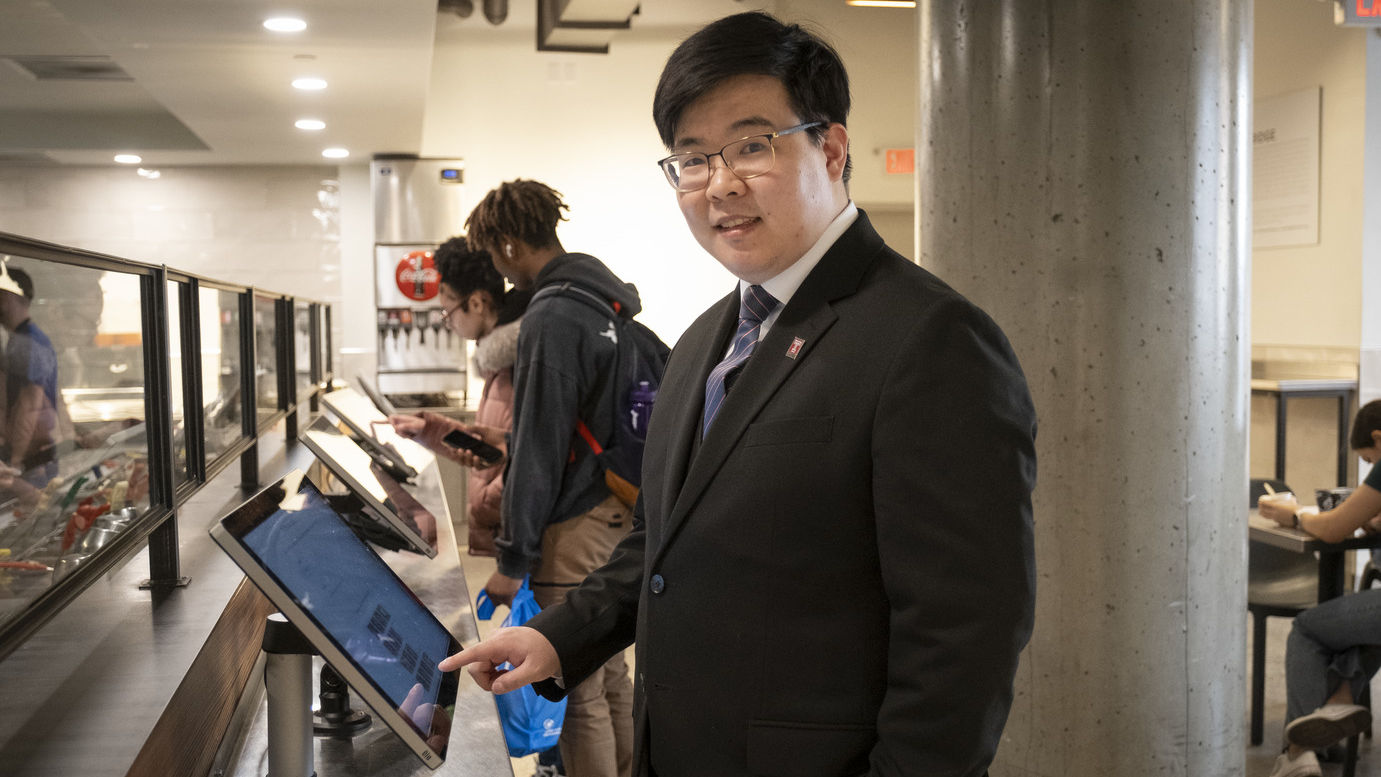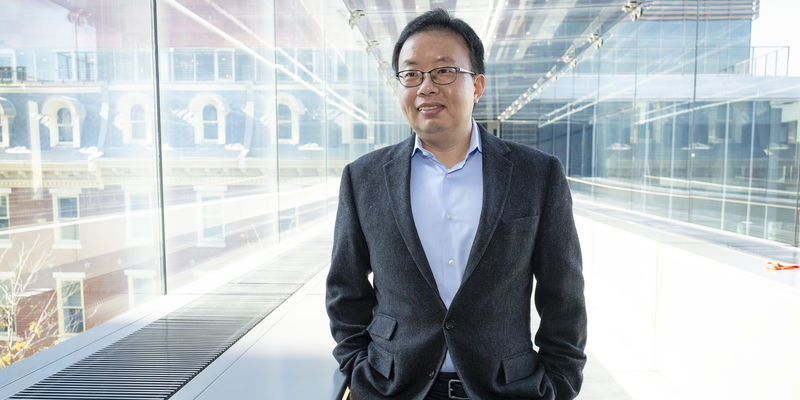Feeling rushed at the food ordering kiosk? You’re not alone
A new study from Temple Professor Lu Lu and PhD candidate Wangoo Lee examines the negative consequences of using self-service technology in busy restaurants.

If you’ve been to a fast-food restaurant recently, you’ve probably noticed that self-service kiosks are beginning to replace human workers. But as you go to place your order and the lunch-rush crowd grows behind you, have you experienced increased pressure to make a decision?
If so, you’re not alone.
According to a recent Temple University study, customers experience more stress when placing their orders, and even order less food, when using self-service kiosks as a line forms behind them.
The study, titled “Lined Up? Examining a ‘Waiting Line’ Effect in Technology-Enabled Restaurant Menu Ordering,” is authored by Lu Lu, associate professor and Arthur F. McGonigle Research Fellow, and Wangoo Lee, PhD candidate at Temple’s School of Sport, Tourism, and Hospitality Management.
Recently published in the Journal of Hospitality and Tourism Research, Lu and Lee’s study has implications for both customers and the fast-casual dining industry. Its key findings are
- customers ordering from a self-service kiosk as a line forms feel increased pressure to place their order, versus customers who order with a human at the counter.
- customers ordering from a self-service kiosk as a line forms tend to order less food, and they are less likely to try new menu items, instead defaulting to items that are familiar to them.
The study comprised a series of scenario-based online experiments. They designed a website that simulated the experience of ordering menu items in a fast-casual restaurant. As participants worked their way through the simulation, they were given a description of what the restaurant physically looked like and asked to imagine that a line was forming behind them. Lu and Lee gathered data on what the participants ordered, how long they spent browsing the menu and how much money they spent.
They then administered a survey, where participants described their experience throughout the simulation. Participants indicated that the simulation’s scenarios were realistic, and that they’ve experienced similar scenarios in real life.
Customers feel more pressure as a line forms and they’re using a kiosk, Lu explained, because they feel a responsibility to keep the line moving.
“When you’re working with a human employee to place your order and there’s a service mishap or delay, you can attribute that fault to the employee. The customer is not responsible for that experience, because there is a conscious human employee there,” said Lu, whose research focuses on consumer behavior marketing, primarily in service interactions and marketing, and food and beverage decision-making. “But when self-service technology is used for placing an order, more of that responsibility is shifted to the customer. This is especially true when there is a waiting line.”
According to the researchers, this ordering anxiety has major implications for businesses using self-service technology. As a line forms, customers tend to order less food and spend less time browsing the menu, their study finds. More importantly, customers tend to order menu items they’re familiar with and ignore new items, which can be especially devastating to fast-casual restaurants.
“For quick service and fast-casual restaurants specifically, having new product development is their key strategy for keeping customers engaged,” Lu said. “Think about Burger King, McDonald’s or Shake Shack. They always have something new on their menu and in their advertisements. They do this to make their menu more interesting.”
If customers default to ordering menu items they’re familiar with, these businesses miss valuable opportunities to engage with customers and differentiate themselves, explained Lu.
“Even though these businesses always have fresh items, people won’t notice because they’re in such a rush to order,” she continued.
Lu and Lee’s findings only apply to customer behavior as a line forms behind them. A recent study authored by Appetize found that self-service technology can actually increase revenue when there is no line and customers have time to customize their order. Lu and Lee’s study suggests that avoiding negative outcomes from ordering at a kiosk may require restaurants to rethink their line design.
Their study tested different line designs and found that one line feeding multiple kiosks helps reduce ordering anxiety.
“When each kiosk has its own line, the customer ordering feels responsible for the people waiting in line,” Lu said. “But when one line feeds multiple kiosks, the group of customers placing their order shares responsibility for the people waiting in line.”
Lu says that restaurants can implement other changes to line design to help reduce ordering anxiety. One idea is to avoid creating a physical line and instead create a virtual line using cellphone technology. She also suggests making waiting in line more interesting for customers, such as by displaying the menu in a way that customers can easily browse as they wait.
And while Lu says ordering anxiety may decrease as we become more comfortable with self-service technology, she doesn’t expect it to go away entirely.
“Humans are social animals by nature—we consider others,” she said. “That feeling of pressure is really just one customer being considerate of other customers. That social consideration will always be there.”
So, the next time you’re stressing and rushing to place your order, consider some advice from Lu: “Give yourself some mercy and remember that you’re not the person who lacks tech skills and is causing an inconvenience. We all have to learn this new process together.”


